Moniek Bloks's Blog, page 71
September 16, 2023
Book News Week 38
Book news week 38: 18 September – 24 September 2023

Warrior Queens & Quiet Revolutionaries
Hardcover – 19 September 2023 (US)

Protect and Keep: The Coronation of Queen Elizabeth II
Paperback – 19 September 2023 (US)
The post Book News Week 38 appeared first on History of Royal Women.
September 15, 2023
Queen Malthace – The loyal wife of King Herod the Great
Queen Malthace was the fourth wife of King Herod the Great of Judea. She was not a Jewess but a Samaritan. King Herod married her in order to anger the Jewish people who openly disfavoured him after Queen Mariamne I’s execution. Queen Malthace is portrayed as a good and loyal wife who did not scheme against her husband. Because of her goodness, King Herod gave her sons the best territories within his kingdom. Queen Malthace would also be known as the mother of Prince Herod Antipas, who played a major role in the deaths of John the Baptist and Jesus of Nazareth.
Queen Malthace was born circa 40 B.C.E. There is very little information about her background.[1] We only know that she was part of the Samaritans, who were enemies of the Jewish people in Judea.[2] We do not even know how she married King Herod.[3] Many historians believe that when King Herod was renovating the capital of Samaria in honour of Emperor Augustus, he fell ill circa 24 B.C.E.[4] Malthace nursed him back to health.[5] After King Herod recovered from his illness, he married her to anger the Jewish people, who openly disfavoured him because of Queen Mariamne I’s execution.[6] King Herod also violated the law of a Jew marrying a non-Jewish woman.[7] Thus, the Jewish people were outraged by King Herod’s marriage.[8]
Queen Malthace bore King Herod the Great three children named Olympias, Herod Antipas, and Herod Archelaus.[9] Unlike King Herod’s other wives, Queen Malthace did not scheme against him.[10] Instead, she remained faithful to King Herod.[11] Therefore, Malthace enjoyed all the wealth and privileges that King Herod bestowed on her as queen until his death in 4 B.C.E.[12] In his will, he gave Queen Malthace’s sons the best territories of his kingdom, which were Samaria, Judea, and Idumaea.[13]
After King Herod’s death, Queen Malthace’s sons, Prince Herod Antipas and Prince Herod Archelaus, quarrelled over their inheritance in their father’s will.[14] Queen Malthace accompanied her sons to Rome to plead their case to Emperor Augustus.[15] While they were still appealing their case to the Roman Emperor, Queen Malthace died in Rome in 4 B.C.E.[16] In the end, neither Prince Herod Archelaus nor Prince Herod Antipas was declared King of Judea.[17] Instead, Prince Herod Archelaus became the ethnarch of Judea, Samaria, and Idumea.[18] Prince Herod Antipas became the tetrarch of Galilee and Perea.[19]
Prince Herod Archelaus is mentioned in the Bible for when Mary, Joseph, and Jesus left Egypt, they were afraid to go back to Bethlehem because Prince Herod Archelaus was the ruler of Judea.[20] Instead, they settled in Nazareth.[21] Prince Herod Antipas would be heavily involved in the executions of John the Baptist and Jesus of Nazareth. In 27 C.E., he married Princess Herodias, who was his niece and his half-brother’s former wife.[22] Their marriage was heavily criticized by John the Baptist, which caused Princess Herodias’s displeasure.[23] Princess Herodias would be best known for prompting her daughter, Princess Salome, to ask for John the Baptist’s head on a silver platter.[24]
While very little is known about Queen Malthace, it is clear that she was very wise.[25] She was not involved in any intrigues against King Herod the Great. This earned her husband’s respect, and he rewarded her and her sons. Yet, she had to witness her son’s quarrel long over their inheritance which forced her to die in Rome. Queen Malthace’s greatest legacy was that of her son, Prince Herod Antipas, who was a key player in the executions of two legendary Biblical figures.[26]
Sources:
Kasher, A., Witztum, E. (2008). King Herod: A Persecuted Persecutor: A Case Study in Psychohistory and Psychobiography. Germany: Netlibrary.
Macurdy, G. H. (1937). Vassal-queens and Some contemporary Women in the Roman Empire. Baltimore: The Johns Hopkins Press.
Malamat, A. (1976). A History of the Jewish People. United Kingdom: Harvard University Press.
Schalit, A. (2007). “Herodias.” Encyclopaedia Judaica (2nd Edition). (M. Berenbaum, Ed. and F. Skolnik, Ed.), 9, New York: Macmillan Reference USA. p. 39.
Smith, M. H. (n.d.). “Malthace (died 4 BCE.)”. Virtual Religion Network. Retrieved on 21 December 2022 from https://virtualreligion.net/iho/malth....
The New American Bible, Revised Edition (1986th Edition). (2011). Charlotte: Saint Benedict Press, 2011.
[1] Smith, n.d., “Malthace (died 4 BCE)”
[2] Kasher and Witztum, 2008
[3] Smith, n.d., “Malthace (died 4 BCE)”
[4] Smith, n.d., “Malthace (died 4 BCE)”; Kasher and Witztum, 2008
[5] Kasher and Witztum, 2008
[6] Kasher and Witztum, 2008
[7] Kasher and Witztum, 2008
[8] Kasher and Witztum, 2008
[9] Macurdy, 1937
[10] Smith, n.d., “Malthace (died 4 BCE)”
[11] Smith, n.d., “Malthace (died 4 BCE)”
[12] Smith, n.d., “Malthace (died 4 BCE)”
[13] Malamat, 1976
[14] Smith, n.d., “Malthace (died 4 BCE)”
[15] Smith, n.d., “Malthace (died 4 BCE)”
[16] Smith, n.d., “Malthace (died 4 BCE)”
[17] Malamat, 1976
[18] Malamat, 1976
[19] Macurdy, 1937
[20] Matthew 2:22
[21] Matthew 2:23
[22] Schalit, 2007
[23] Schalit, 2007
[24] Mark 6:28
[25] Smith, n.d., “Malthace (died 4 BCE)”
[26] Macurdy, 1937
The post Queen Malthace – The loyal wife of King Herod the Great appeared first on History of Royal Women.
September 14, 2023
Royal Jewels – Girls of Great Britain and Ireland Tiara
The Girls of Great Britain and Ireland Tiara was a wedding gift to Princess Mary of Teck (later Queen Mary) from a committee headed by Lady Eva Greville, who later served as one of her ladies-in-waiting. It was purchased from Garrard’s.
Embed from Getty ImagesPrincess Mary later wrote to Lady Eva that the tiara “will ever be one of my most valued wedding gifts.”1 The money that was left over after the purchase of the tiara was donated to a fund established to help the widows and orphans of the men lost after the sinking of the HMS Victoria.
The tiara was originally set with 14 large pearls and could be adjusted to be worn as a necklace or a coronet. As Duchess of York, Princess Mary wore the coronet style to the famous Devonshire House Ball in 1897.
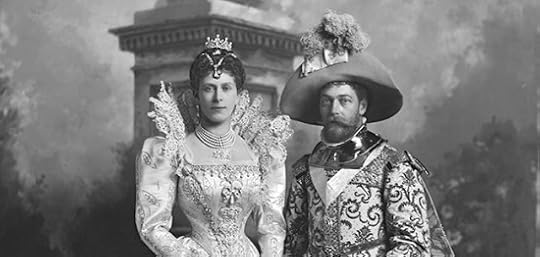 The tiara in coronet form (public domain)
The tiara in coronet form (public domain)In 1914, she replaced the pearls with 14 diamonds she had taken from another wedding present. The pearls were reused on the new Lover’s Knot Tiara. She also had the bandeau removed from the base so that it could be worn separately.
Embed from Getty ImagesBoth the tiara and the bandeau were given to the future Queen Elizabeth II as a wedding present in 1947, and she had the bandeau reattached in 1969.
Embed from Getty ImagesThe post Royal Jewels – Girls of Great Britain and Ireland Tiara appeared first on History of Royal Women.
September 12, 2023
Queen Mariamne II – The other banished wife of King Herod the Great
Queen Mariamne II was the third wife of King Herod the Great of Judea. She reminded King Herod of his executed wife, Queen Mariamne I, because of her name and beauty. Therefore, King Herod found her to be a suitable substitute for Queen Mariamne I and wished to marry her. However, her lowly status prevented him from marrying her. To eliminate the obstacle, King Herod appointed her father, Simon, the High Priest of Jerusalem. With Simon as the High Priest, King Herod sent a message to the Jewish people that the monarchy was more important than religion.[1]
Queen Mariamne II was born circa 45 B.C.E. Her father was Simon, the son of Boethus of Alexandria. Her family consisted of Jewish priests and noblemen from Alexandria, Egypt, who settled in Jerusalem.[2] Mariamne II was said to be very beautiful.[3] People began to speak of her beauty throughout Jerusalem, and it quickly reached the ears of King Herod the Great.[4] The fact that her name was Mariamne and was said to be beautiful made King Herod curious about her because she reminded him of Mariamne I.[5] He wanted to catch a glimpse of her.[6] The moment he saw Mariamne, he fell madly in love with her.[7] King Herod thought that Mariamne would be a good substitute for his late wife and hoped that she would help him get over his grief.[8] However, Mariamne’s low status made it an obstacle to marrying her.[9] He raised her status by appointing Mariamne’s father, Simon, the High Priest of Jerusalem.[10]
Simon, the High Priest of Jerusalem, would be the first of the Boethusian priests (who were influential during Herod’s reign and when Israel was ruled by Roman governors).[11] With Simon as the High Priest, King Herod held full authority over the Temple and the Jewish community.[12] Therefore, King Herod had total authority over the priests of Jerusalem and made it hard for the priests to oppose him.[13] King Herod stripped the High Priesthood of its source of power, which was that it was a lifetime position and could be passed down to their sons.[14] Instead, King Herod made the position temporary and no longer inheritable.[15] King Herod also stored the High Priest’s priestly garments in his Antonia Fortress.[16] This meant that King Herod was sending a message to the Jewish people that the monarchy was more important than religion.[17] Thus, the Jewish people were outraged and would later rebel against the Boethusian priests.[18]
King Herod married Mariamne in 24 B.C.E. Queen Mariamne II bore a son named Herod Philip I. Because her father was the High Priest of Jerusalem, she and her father were solely reliant on her husband’s favour.[19] She stayed out of the political intrigues that involved Queen Mariamne I’s sons in 7 B.C.E.[20] In 4 B.C.E., Queen Mariamne II learned of Queen Doris’s scheme of murdering King Herod and placing her son, Prince Antipater, on the throne.[21] However, Queen Mariamne II did not mention this scheme to her husband.[22] When Prince Antipater was executed, King Herod made Queen Mariamne II’s son, Prince Herod Philip I, the heir apparent.[23] Shortly after King Herod made Prince Herod Philip I the heir apparent, he learned that Queen Mariamne II knew about Queen Doris’s scheme but had kept quiet.[24] King Herod believed that Queen Mariamne II was an active participant in Queen Doris’s conspiracy.[25] Therefore, he removed Simon as the High Priest of Jerusalem.[26] He stripped Prince Herod Philip I as the heir apparent and did not include him in his will.[27] Then, he banished Queen Mariamne II from the palace.[28]
After the banishment, Queen Mariamne II’s life in exile is unknown.[29] There is no mention of how or when she died.[30] Her son, Prince Herod Philip I, was the first husband of Princess Herodias. He was also the father of Queen Salome of Chalcis and Armenia Minor. However, Princess Herodias would divorce Prince Herod Philip I and marry Prince Herod Antipas. Both Princess Herodias and her daughter, Princess Salome, would become legendary figures because of their involvement in the execution of John the Baptist.
King Herod the Great of Judea saw Queen Mariamne II as a substitute for his executed wife, Queen Mariamne I. He used the appointment of Queen Mariamne’s father as the High Priest of Jerusalem in order to be able to marry her. Therefore, Queen Mariamne II and her father were mere pawns of King Herod and were solely dependent on him. Thus, their downfall was swift and sudden as their rise to power because King Herod believed Queen Mariamne II to be involved in a conspiracy to kill him. The greatest legacy of Queen Mariamne II was that she was the first mother-in-law of Princess Herodias and the grandmother of Queen Salome.[31]
Sources:
Ilan, T. (31 December 1999). “Hasmonean Women.” Shalvi/Hyman Encyclopedia of Jewish Women. Jewish Women’s Archive. Retrieved on December 21, 2022 from. https://jwa.org/encyclopedia/article/....
Kasher, A., Witztum, E. (2008). King Herod: A Persecuted Persecutor: A Case Study in Psychohistory and Psychobiography. Germany: Netlibrary.
Macurdy, G. H. (1937). Vassal-queens and Some contemporary Women in the Roman Empire. Baltimore: The Johns Hopkins Press.
Smith, M. H. (n.d.). “Mariamne II (died aft. 4 BCE.)”. Virtual Religion Network. Retrieved on 21 December 2022 from https://virtualreligion.net/iho/maria....
[1] Kasher and Witztum, 2008
[2] Ilan, 31 December 1999, “Herodian Women”
[3] Kasher and Witztum, 2008
[4] Kasher and Witztum, 2008
[5] Kasher and Witztum, 2008
[6] Kasher and Witztum, 2008
[7] Macurdy, 1937
[8] Kasher and Witztum, 2008
[9] Ilan, 31 December 1999, “Herodian Women”
[10] Ilan, 31 December 1999, “Herodian Women”
[11] Kasher and Witztum, 2008
[12] Kasher and Witztum, 2008
[13] Kasher and Witztum, 2008
[14] Kasher and Witztum, 2008
[15] Kasher and Witztum, 2008
[16] Kasher and Witztum, 2008
[17] Kasher and Witztum, 2008
[18] Kasher and Witztum, 2008
[19] Smith, n.d., “Mariamne II (died aft. 4 BCE)”
[20] Smith, n.d., “Mariamne II (died aft. 4 BCE)”
[21] Macurdy, 1937
[22] Macurdy, 1937
[23] Smith, n.d., “Mariamne II (died aft. 4 BCE)”
[24] Macurdy, 1937
[25] Kasher and Witztum, 2008
[26] Kasher and Witztum, 2008
[27] Smith, n.d., “Mariamne II (died aft. 4 BCE)”
[28] Ilan, 31 December 1999, “Herodian Women”
[29] Smith, n.d., “Mariamne II (died aft. 4 BCE)”
[30] Smith, n.d., “Mariamne II (died aft. 4 BCE)”
[31] Macurdy, 1937
The post Queen Mariamne II – The other banished wife of King Herod the Great appeared first on History of Royal Women.
September 10, 2023
Book Review: The daughters of Edward I by Kathryn Warner
*review copy*
King Edward I of England, who ruled from 1272 until 1307, went on to father many children with two wives. His first wife, Eleanor of Castile, bore the majority of his children, fourteen or perhaps even as much as sixteen. Of these five daughters and one son, the future King Edward II, survived to adulthood. He had a further two sons with his second wife, Margaret of France.
The daughters of Edward I by Kathryn Warner focuses on the daughters of his first marriage. These are Eleanor, later Countess of Bar, Joan, later Countess of Hertford and Countess of Gloucester, Margaret, later Duchess of Brabant, Mary, who became a nun, and Elizabeth, later Countess of Holland and Countess of Hereford.
The trouble with writing about women during this time is that, quite often, the information simply does not exist. Often birthdays weren’t recorded, nor were the dates of death. This makes piecing their lives together very difficult. Kathryn Warner still manages to do this nicely for Edward’s daughters, with the limited information available. I enjoyed reading the bit about how serious thought was given to female succession, as many of Edward and Eleonor’s sons did not survive to adulthood. It did become a little confusing later in the book when grandchildren through his daughters came into play, and you have to keep focussed on keeping them all apart.
Overall, I’d say this book is a wonderful addition to any royal library as it fills in a gap in history.
The daughters of Edward I by Kathryn Warner is available now in the US and the UK.
The post Book Review: The daughters of Edward I by Kathryn Warner appeared first on History of Royal Women.
September 9, 2023
Book News Week 37
Book News week 37: 11 September – 17 September

Hunting the Falcon: Henry VIII, Anne Boleyn and the Marriage That Shook Europe
Hardcover – 14 September 2023 (UK)
[no image yet]
Æthelflæd, Lady of the Mercians, and Women in Tenth-Century England (Richard Rawlinson Center for Anglo-saxon Studies)
Hardcover – 13 September 2023 (US) & UK)
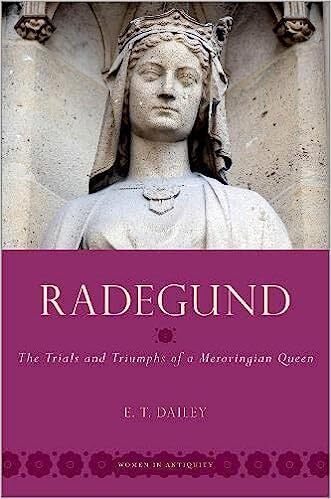
Radegund: The Trials and Triumphs of a Merovingian Queen (WOMEN IN ANTIQUITY)
Paperback and Hardcover – 15 September 2023 (US)

Alfred’s Dynasty: How an Anglo-Saxon King and His Family Defeated the Vikings and Created England
Hardcover – 15 September 2023 (UK)
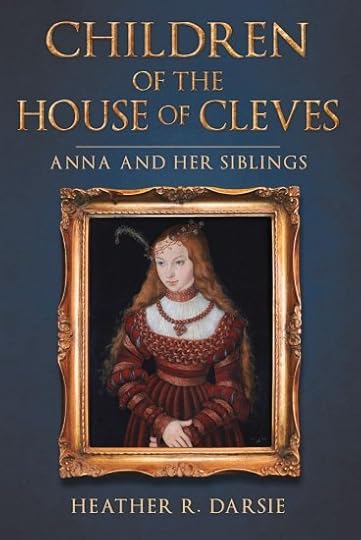
Children of the House of Cleves: Anna and Her Siblings
Hardcover – 12 September 2023 (US)
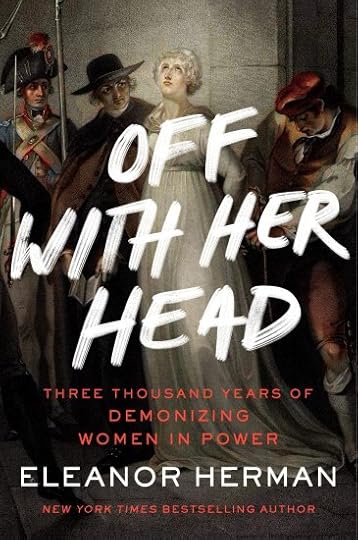
Off with Her Head: Three Thousand Years of Demonizing Women in Power
Paperback – 12 September 2023 (US)
The post Book News Week 37 appeared first on History of Royal Women.
September 8, 2023
The Year of Marie Antoinette – Marie Antoinette & the Princess of Lamballe (Part two)
In the first part of this article, we discussed the early years of the Princess of Lamballe, a young widow who became best friends with the Queen of France, Marie Antoinette. Here we will continue with what happened to the Princess of Lamballe while France was in the midst of the revolution.
We have no space here to discuss the full events of the French Revolution, but what is important for the context of the Princess of Lamballe’s story is to know that during the period of 1787 to the late 1790s, France was changed entirely. The monarchy fell, and a republic was proclaimed after a drawn-out period of political struggle. France was placed under martial law, which resulted in the execution of around 17000 people and large numbers of deaths in related massacres and wars. There are many great books and articles available on the French Revolution for those wishing to find out the full details.
In the Princess of Lamballe’s earlier years, she was one of the highest-ranking women at the court of France, and there were many people that were jealous of her friendship with the Queen. From 1789 onwards, however, being the favourite of the French Queen was no longer an enviable position. The royal family witnessed many of their friends and relatives flee from Paris in the years that followed to save themselves, forgetting their loyalties to their monarchs. The Princess of Lamballe was amongst the friends and staff who stayed with the family until the very end. On the 7th of October 1789, the Princess of Lamballe returned from a trip away from the court. She had heard about the revolutionary activity in Paris and headed back to her position running the Queen’s household. By this stage, the royal family had been moved to the Tuileries Palace under house arrest and were no longer keeping court at Versailles.
For some time, life carried on somewhat normally, with the Princess of Lamballe organising events for the family, playing cards with the Queen and rallying support for the family. The Princess of Lamballe became much more protective at this time, interrogating members of the Queen’s household to find out if those surrounding the Queen were truly loyal to her. By late 1789 many members of the royal family and friends, such as the Duchess of Polignac, had left for a life in exile. This meant that a lot of public hatred began to be directed at the Princess of Lamballe, who became a symbol of the old regime and was often ridiculed in pamphlets during this period. On the 20th of June 1791, the royal family fled from Paris. Unfortunately for the family, they were caught in a town called Varennes and brought back to Paris.
At a time when the National Constituent Assembly was in the process of trying to create a constitutional monarchy, the attempted escape was a disaster for the royal family, who was widely distrusted after the event. The Princess of Lamballe was not told about the escape attempt until afterwards. After hearing of the failure of the plot, the Princess of Lamballe busily visited England, the Austrian Netherlands, Brussels and different parts of France, meeting with diplomats and royals where she must have been mustering support for her dear friends. It was a tough time for the Princess of Lamballe as it was unclear if she was more useful to her Queen outside of France or by her side. In October 1791, the Queen was ordered to arrange her household and remove any staff not in active service under the rules of the new constitution. Marie Antoinette wrote a letter saying to the Princess of Lamballe that she must choose to either return to the family or resign. Upon receipt of this, the Princess of Lamballe said, “I must live and die with her,” and returned to Paris with haste.
The Princess of Lamballe must have truly believed this statement as she wrote her will before leaving. The Princess of Lamballe was said to have been most shocked to see the Queen again as she looked worn out with sunken eyes and completely white hair as though she had aged by decades. The family and their few remaining staff members had to get used to being constantly watched and living in greatly reduced living conditions. The Princess of Lamballe continued in her role managing the Queen’s household at the Tuileries and tried to encourage nobles to return to France to support the royal family. At this time, the Mayor of Paris and the Legislative Assemblies’ Committee of Surveillance were watching the Princess of Lamballe’s apartments in the belief that she was hosting an Austrian committee that would destroy the work of the revolution. After the attack on the Tuileries Palace on the 20th of June 1792, where the Princess of Lamballe protected her Queen from an angry mob, the grip tightened around the royal family. The Princess of Lamballe was moved with them to a number of locations before they settled into the cramped confines of the Temple.
After being unwell and briefly leaving the family to recuperate in this period, the Princess of Lamballe returned to her post once again despite being urged not to by her Queen. It is said that Madame de la Rochejaquelin visited the Princess of Lamballe in this period and was told by her, “As the danger augments, I feel more strength. I am ready to die.” A week after the family was imprisoned in the Temple, a number of their remaining attendants were removed by the Paris Commune. The Queen fought to keep the Princess of Lamballe with her and wept while she knelt at her feet and kissed her hands. The Princess of Lamballe was taken away and imprisoned in La Force prison, a dingy place which usually held prostitutes. We have records of what happened to the Princess of Lamballe in this period from the diary of Louise-Élisabeth de Croÿ de Tourzel, who had been governess to the royal children and was also imprisoned in La Force with her daughter Pauline.
Pauline de Tourzel was rescued and smuggled out of prison, but her mother and the Princess of Lamballe were too well known for anybody to be able to rescue them in this way. The prisons were more terrifying than usual in this period as mobs began to attack prisons where they created their own tribunals. The prison staff often opposed these ‘people’s tribunals’, but they were powerless to stop the mobs. The makeshift courts would ask the accused a few questions and either let them go or release them to a mob outside. These killings were known as the September massacres. On the 3rd of September 1792, after weeks in prison being interrogated, the Princess of Lamballe and Louise de Tourzel were brought before a people’s tribunal. De Tourzel was released as many other household members and staff had been, but the Princess of Lamballe seemed to become the exception. It is believed that her fate was sealed from the moment she entered the prison as her name was underlined in the register.
There are many different stories of how the Princess of Lamballe’s trial and final hours panned out, some of which were exaggerated tales produced for propaganda. Nevertheless, it is still difficult to separate the stories from the facts in some cases. What we do know is that the Princess of Lamballe was brought in front of a tribunal and asked a series of questions which included asking her about her knowledge of certain plots, to which she responded that she did not know of them. Then she was told to “swear to Liberty and Equality and hatred of the King and Queen,” the Princess of Lamballe said that she would agree to the first part but not the second as “it is not in my heart.” After this, agents of her father-in-law told her to swear the oath so that she might be spared, but she refused to do so and reportedly said, “I have made the sacrifice of my life.”
If the Princess of Lamballe had denounced her friends and shouted “Vive le nation”, perhaps she would have been released, but instead, she was led out to the street to a group of men. There was to be no swift execution for the Princess of Lamballe. Instead, she was brutally murdered by an angry mob, many of whom took their hatred for the Queen out on her. Most of the sources state that the Princess was first struck with a pike on the head, which began to bleed before being set upon by a group of men who beat her and stabbed her repeatedly before throwing her body on a heap of corpses and cutting off her head. Other stories include tales of rape or extended hours of torture, but we cannot be sure if any of these things happened. We can be sure, however, that the kind, devoted Princess of Lamballe met a horrifying end.
After her death, the head of the Princess of Lamballe was taken to the Temple to be shown to the Queen at the window. The Queen did not see the head but cried all night long upon hearing about her dear friend’s death. The Princess of Lamballe’s body was never found despite her father-in-law searching desperately for it. A year later, the Princess of Lamballe’s best friend, Marie Antoinette, was also dead after being guillotined by a Revolutionary Tribunal.1
The post The Year of Marie Antoinette – Marie Antoinette & the Princess of Lamballe (Part two) appeared first on History of Royal Women.
September 7, 2023
The Year of Marie Antoinette- Marie Antoinette & The Duchess of Polignac
Yolande Martine Gabrielle de Polastron was born to parents Jean François Gabriel de Polastron and his wife Jeanne Charlotte Hérault on the 8th of September 1749.
Though her first name was Yolande, she went by the name Gabrielle, which I will use throughout the article. Gabrielle was born into an aristocratic family, and her father served as the French ambassador to Switzerland. Though she hailed from a noble family line, by the time Gabrielle was born, the family had lost much of its influence and was amassing large debts.
When Gabrielle was just three years old, her mother passed away. The young Gabrielle left her family Château in Languedoc and was put into a convent school under the guardianship of an aunt. We do not know what happened in Gabrielle’s life until she left the school at sixteen and she became engaged. Her betrothed was Jules François Armand, Count of Polignac. Jules was also from an aristocratic family, and the match was considered a good one, though his family were also struggling financially. When Gabrielle and Jules were married on the 7th of July 1767, he was serving in the military with the regiment of the Royal Dragons. Jules received a good salary for his military role, but he was burdened with his family’s growing debt, and his income was stretched as he and Gabrielle welcomed four children between 1768 and 1781: a daughter named Aglaé and three sons: Armand, Jules and Camille.
In 1775, Gabrielle was invited to attend the court of Versailles by her sister-in-law Diane de Polignac, who was serving as a Lady-in-waiting at the time. Upon arriving at court, Gabrielle was introduced to Queen Marie Antoinette, who liked her instantly. Gabrielle was known to be beautiful and to have a lovely smile, but there were many more beautiful women at Versailles. It was also said that she had “no particular talents or great wit”, nevertheless, the Queen loved her for her charm, modesty and her “soothing influence.” Soon, Marie Antoinette asked her new friend to move to court permanently, as she had few close friends she could trust and talk to since becoming Queen. Gabrielle sadly had to decline as her family’s finances would not allow them to make such a move.
Desperate to keep her companion by her side, Marie Antoinette asked her husband, King Louis XVI, to intervene and to give Jules de Polignac a new position with greater pay. As King Louis was pleased that his wife finally seemed happy, and Jules was given the role of First Equerry to Her Majesty, meaning the king had to remove this role from the Count of Tesse. Other families had also been holding out for this title and were furious at Jules de Polignac’s sudden rise in rank and position and deeply resented Gabrielle.
It soon became difficult for anyone else to get close to the Queen. She and Gabrielle often spent their time away from the confines of court, staying at the Petit Trianon palace, where the atmosphere was carefree and relaxed. Portraits of Marie Antoinette and Gabrielle from the time show them in loose dresses with their hair down during their stays at the Petit Trianon. Gabrielle has been described as “ravishing” or “like ripe and harvested fruit” during these pretty portraits. Even when they were at Versailles, the Queen and Gabrielle were attached at the hip, whether at balls or playing a game of cards. Gabrielle was now the head of the Queen’s circle and held a vast amount of power and influence at court.
In 1780, this power grew even more when Jules de Polignac was made the Duke of Polignac, making Gabrielle a duchess. Certain factions at court were truly astonished, and cruel pamphlets began to be circulated around Paris about the new Duchess of Polignac. These pamphlets focused on Gabrielle’s “extravagant expenditure” while the country was struggling but also published explicit pornographic cartoons depicting Gabrielle and the Queen as if they were involved in a lesbian relationship. We have no evidence to back this rumour up, and even the extent of Gabrielle’s expenses is contested by historians, with some saying she spent far more than any other favourite and others saying this has been exaggerated.
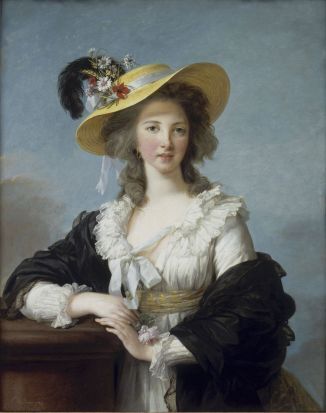 (public domain)
(public domain)If people were annoyed when Gabrielle became a Duchess, they were furious in 1782 when she was given the role of Governess of the Children of France after the resignation of Victoire de Rohan. This position was usually passed down through generations and reserved for the high nobility; Gabrielle had not been born into this rank. In addition to the position and the honour it brought with it, the Duchess was rewarded with a staggering 13-room apartment. Though Versailles is known as one of the world’s most sumptuous palaces, in reality, the palace was overcrowded and lacked basic sanitation. While many other European royal families moved from court to court, allowing time to deep clean while everyone had moved on to another palace, since King Louis XIV, France’s royals were based at Versailles, along with over 10,000 members of government, nobility and military. Even a 5-room apartment was considered absolute luxury, so Gabrielle being given 13 rooms was unheard of.
As time went by, the Queen and Gabrielle had a falling out, as it was rumoured that Gabrielle was caught up in an affair with a man that the Queen did not approve of. Gabrielle decided to leave court for a while to spend time visiting England, where she became close friends with another famous figure of the era, Georgiana, Duchess of Devonshire. By the time she returned to France, her friendship with the Queen was back on track, but this period of happiness was not to last, as the Revolution was underway in France. At this time, Gabrielle and the other Polignacs rallied around the royal family and staunchly defended the monarchy when many other friends began to drift away.
On the 14th of July 1789, the Bastille was stormed by Revolutionaries. After this happened, the King ordered a number of the family’s closest friends and allies into exile for their own safety, and this included the King’s brother, the Count of Artois and the Polignac family. Gabrielle left her home in France with her sister and headed to Switzerland, leaving her post as Governess to the royal children. While in exile, the Duchess wrote to the Queen as often as she could from wherever she was staying at the time. For years, Gabrielle moved around between the Netherlands, Austria, Italy and Switzerland. The Queen wrote back when she could, and in one letter, she said, “Adieu, dearest of friends; the word is awful, but I must say it; I have only strength enough to send you my love.” This emotional quote shows that Marie Antoinette did not believe she would see Gabrielle again.As ever, Gabrielle faced criticism from the public, this time for leaving the Queen, when other friends, such as the Princess of Lamballe, had remained by her side.
While in exile, Gabrielle could do little more than read letters and newspaper reports about the execution and exile of countless dear friends. Soon, Gabrielle came to hear that the Queen herself had died by guillotine, news that the Duchess found too difficult to bear. Gabrielle de Polignac died just 50 days after her beloved friend Marie Antoinette on the 5th of December 1793. At the time, it was said she died of a broken heart, though it now seems she had been suffering from cancer for some years, which resulted in her death aged only 44.
Filia Dolorosa: Memoirs Of Marie Thérèse Charlotte, Duchess Of Angoulême p25-26
Filia Dolorosa p26
Simon Schama: A Chronicle of the French Revolution p181-183
en.chateauversailles.fr/discover/hist... and Antonia Fraser: Marie Antoinette- The journey p131
www.history.com/news/royal-palace-lif... and https://en.chateauversailles.fr/disco...
Simon Schama: A Chronicle of the French Revolution p212
https://en.chateauversailles.fr/disco...
Sources
Filia Dolorosa: Memoirs Of Marie Thérèse Charlotte, Duchess Of Angoulême
Citizens- A Chronicle of the French Revolution by Simon Schama
Marie Antoinette- The Journey by Antonia Fraser
en.chateauversailles.fr/discover/hist...
www.history.com/news/royal-palace-lif...
The post The Year of Marie Antoinette- Marie Antoinette & The Duchess of Polignac appeared first on History of Royal Women.
The Year of Marie Antoinette – Marie Antoinette & the Princess of Lamballe (Part one)
Marie Thérèse Louise of Savoy-Carignan was born on the 8th of September 1749 in Turin. She was the sixth child of Louis Victor, Prince of Carignano and his wife, Landgravine Christine of Hesse-Rheinfels-Rotenberg. As her father was descended from King Victor Amadeus II of Sardinia, Marie Thérèse was a member of a cadet branch of the House of Savoy, one of Europe’s oldest and most prestigious royal houses.
When Marie Thérèse was seventeen, a proposal for her hand in marriage came from the court of France. The French King Louis XV suggested Louis Alexandre de Bourbon, Prince of Lamballe as her suitor. The Prince of Lamballe was a prince of the blood as he was a great-grandson of King Louis XIV and his mistress Madame de Montespan. Louis Alexandre was also the heir of the wealthiest nobleman in France, the Duke of Penthièvre. The match was deemed a very good one for Marie Thérèse despite Louis Alexandre’s terrible reputation as a debauched and selfish young man. The King of Sardinia agreed to the pairing as an alliance between France and Savoy was long sought after, and plans were put in place immediately for the wedding.
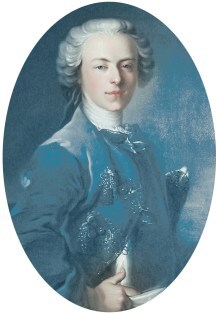 (public domain)
(public domain)The wedding took place in January 1767 in Turin by proxy, with Marie Thérèse’s brother standing in for the groom. The celebrations continued for weeks as Marie Thérèse left Turin and headed to meet her husband and father-in-law in Nangis, central France. The night before the couple was due to meet formally, the Prince of Lamballe delivered flowers to his bride, disguised as a page. The new Princesse found the page handsome and charming and was happy to find out the next day that he was, in fact, her husband. While in Nangis, the couple’s marriage was blessed, and they celebrated with a banquet which was attended by many of the princes of the blood. Everything seemed to be going well for the new young couple.
The Prince’s father, the Duke of Penthièvre, had hoped that marrying a sweet, pious woman such as Marie Thérèse would bring a stop to his son’s womanising and gambling, but after just a few short weeks of marriage, it was clear that the Prince could not be tamed. The Prince often abandoned his wife and visited his mistresses for months on end. After seventeen months of marriage, the Princess of Lamballe was widowed as her husband succumbed to a venereal disease. The Princess tried her best to nurse him, to no avail. After her husband’s death, it was only her father-in-law’s intervention that stopped her from retreating to a nunnery as he asked her to stay with him and help in his charitable work. From this point on, he loved the Princess like his own daughter.
After the death of her husband, the young Princess divided her time between the French court, where she had begun to form friendships, and joining in with her father-in-law’s charitable endeavours. The pair began to be known as the good angel of Penthièvre and the King of the poor and were well-loved by local people. Once her sister-in-law, the Duke’s daughter, was married to the Duke of Chartres, however, the Princess and her sister-in-law both spent more time at court, where a fashionable young circle was forming just in time for the arrival of the future Queen, Marie Antoinette.
Marie Antoinette arrived in France in May 1770 at the age of fourteen as the new wife of Dauphin Louis, the heir to the French throne. Her mother and governesses wished to select only the most suitable girls as the new Dauphine’s friends. Luckily, as a Princess of the blood and a discreet and pious young woman, the Princess of Lamballe met the criteria. The Princess and Dauphine were introduced to each other by King Louis XV and grew close rather quickly.
This was an era of deep female friendships, where elite young girls obsessed over their best friends, carried pictures of them around and were deeply devoted to each other to an almost romantic level. This was certainly how Marie Antoinette seemed to feel about the Princess of Lamballe; the pair were rarely seen apart, and if they were, Marie Antoinette would draw images of the Princess and weep about missing her. In March 1771, the Austrian ambassador reported, “For some time past, the Dauphine has shown a great affection for the Princesse de Lamballe. This young Princess is sweet and amiable, and, enjoying the privilèges of a Princess of the Blood Royal, is in a position to avail herself of her Royal Highness’s favour.”
Soon this deep friendship became more of a familial bond as three of the Princess of Lamballe’s cousins married siblings of the Dauphin. By this stage, the French and Savoyan royal houses were deeply interwoven, and the Princess of Lamballe was assured of her high rank and favour at court.
In May 1774, the sudden death of King Louis XV meant that Marie Antoinette and her husband ascended to the throne as the King and Queen of France. The pair reportedly dropped to the floor in prayer and proclaimed, “we are indeed too young to reign”. After she became Queen, Marie Antoinette found that many of her doubters suddenly wished to become close to her, and she had to determine who her true friends were. Despite apparently saying ‘the Queen does not avenge the Dauphine’, Marie Antoinette gave the highest-ranking post in her household to her dear friend, the Princess of Lamballe and made her the Superintendent of the Queen’s household.
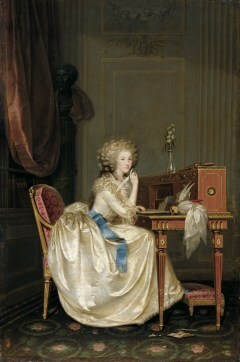 (public domain)
(public domain)The elevation of the Princess to this post caused friction at court, firstly because many older or more experienced women believed they should have the post and secondly because it had not existed for thirty years. The role was one of the most highly paid at court, and despite having plenty of her own money, the Princess would not renounce the 50,000 crowns a year salary which came with her new post. Marie Thérèse refused to renounce the salary because she was undertaking such a huge amount of work at court; due to the state of France’s finances, this earned her many enemies. Her new role meant that the Princess was elevated above all other women at court. On top of this, she had to organise all entertainments for the Queen and received all of the Queen’s letters and petitions.
Though some people did suspect Marie Thérèse of pushing her Savoyan interests at court and promoting family members to high-ranking positions, she was mostly regarded as an honest and true friend who stayed away from plotting and gossip, unlike her Savoy cousins who did not make such a good name for themselves. Marie Antoinette certainly trusted her greatly and said to her husband that “the Princesse de Lamballe’s friendship is the charm of my life.” It seemed that the two young friends were too busy having fun to notice France’s people slipping further and further into poverty and despair. In the freezing winter of 1776, the friends attended glorious parties and went out on horse-drawn sleigh rides. Madame de Campan, a lady-in-waiting, wrote that the Princess of Lamballe looked like “spring clothed with ermine” or “a rose in the snow” and described her and the Queen as twins.
After 1776, the friendship between the Princess of Lamballe and Marie Antoinette began to wane somewhat, as Marie Thérèse was seen as reserved and quiet. In contrast, Marie Antoinette was coming into the prime of her life, wishing to entertain and have fun. Though the pair remained constant friends, they saw less of each other, and Marie Antoinette began to favour the outgoing Duchess 0f Polignac.
Despite falling slightly from the Queen’s favour, the Princess of Lamballe maintained her role as Superintendent of her household and also threw herself into work with charities and the Freemasons. Before long, the Queen gravitated back towards Marie Thérèse and away from the Duchess of Polignac. At the same time, the first groans of the revolutionary voices were heard in France, and Marie Thérèse was targeted in explicit pornographic pamphlets which portrayed her to be the lover of the Queen and helped her to spend France into ruin.
On the 7th of October 1789, the Princess of Lamballe returned from a trip away caring for her father-in-law. She had been away from court on holiday, then with her father-in-law during the beginning of the French Revolution. While countless royals and nobles fled the French court over the next few years, the Princess of Lamballe did the opposite and returned as soon as possible. On her return, she joined the royal family who had been removed from Versailles and was under house arrest in the Tuileries Palace at this time.1
Part two coming soon.
The post The Year of Marie Antoinette – Marie Antoinette & the Princess of Lamballe (Part one) appeared first on History of Royal Women.
September 5, 2023
The Year of Marie Antoinette – Marie Antoinette & The Countess of Provence (Part three)
The only surviving child of King Louis XVI and Marie Antoinette was their eldest daughter Madame Royale. She was eventually released from prison in December 1795 and travelled to Courland, where the Count of Provence was living. His wish was that she would marry his nephew Louis-Antoine, Duke of Angoulême, the son of the Count and Countess of Artois. She agreed to this, and he invited Marie Joséphine to the wedding, despite their differences. However, he had ordered that Marie Joséphine leave Marguerite de Gourbillon behind. She refused to do this, and when they arrived together, they were forcibly separated by the police. At Mitau Castle, Marie Joséphine refused to change out of her travelling clothes and locked herself in her room with a bottle of liquor.1
In the morning, she had calmed down enough to travel with her husband and their nephew to meet the bride. Madame Royale threw herself in front of her uncle’s feet and said, “I see you at last. I am so happy. Here is your child; please be my father.”2 He embraced her, as did Marie Joséphine. The couple was married the following morning. Marie Joséphine did not stick around for long.
The cold in Courland had reached Marie Joséphine’s bones, and she decided to travel to a milder climate. She spent some time in a spa in Pyrmont and then at Schierensee. In the autumn of 1802, she could be found in the town of Wildungen. She began to have serious health issues and desperately wrote, “How to tell you all that I suffered, I was six weeks without sleeping or eating, throwing up even a little sugar water.”3
In 1804, Marie Joséphine was forced to return to her husband, as he could no longer support two separate households. They lived in a house in Mitau.4
In 1808, Marie Joséphine and her niece, the Duchess of Angoulême, were escorted to England by the Duke of Angoulême to join Marie Joséphine’s husband there. By then, Marie Joséphine was very ill with dropsy. They first lived at Gosfield Hall before moving to Hartwell House the following April. Lady Jermingham wrote, “She walks bent double, elbows out, and when seated she is bent over, with her hands holding her knees and a stool under her feet.”5
Nevertheless, she remained in good spirits and had managed to rebuild the relationship with her husband and other members of the family. Her health meant that she couldn’t travel a lot, but she did receive a lot of visitors.
As her health declined with every passing day, she wrote, “I hope that my suffering will soon have an end and that my Lord will grant me the resignation, the courage and the patience to bear the evils that I suffer.”6
After receiving the last rites, Marie Joséphine told the Duke and Duchess of Angoulême that she thought of them as her own children.7 She died on 13 November 1810 after telling her husband, “It’s over, I’m done.”8
Her funeral took place in the Church of St Louis in London, and her husband was so overcome with grief that he did not attend. Her body then briefly rested in Westminster Abbey before it was moved to Cagliari in Italy, where she was buried in Cagliari Cathedral.
Her husband later wrote, “I am a widower, my friend. My poor wife died on Tuesday.[..] My soul suffers so cruelly.”9
The post The Year of Marie Antoinette – Marie Antoinette & The Countess of Provence (Part three) appeared first on History of Royal Women.



